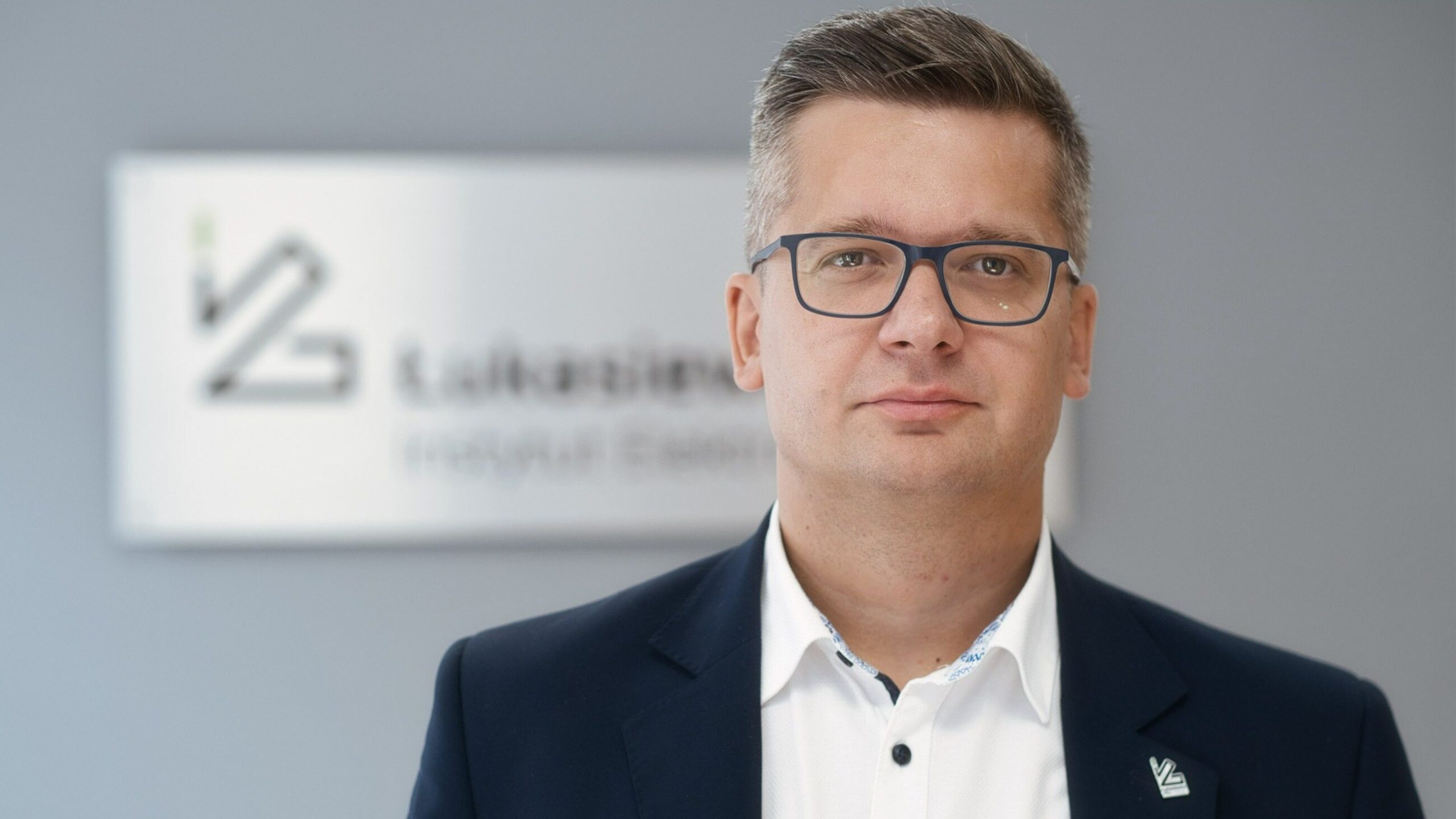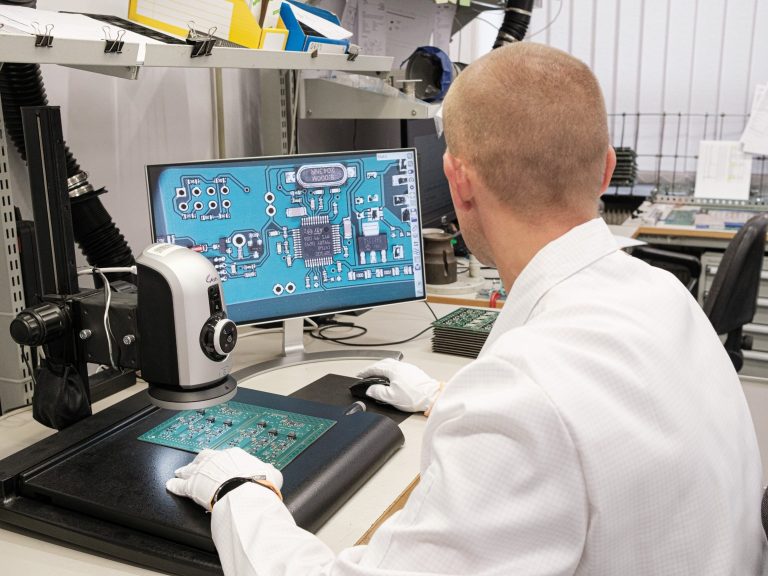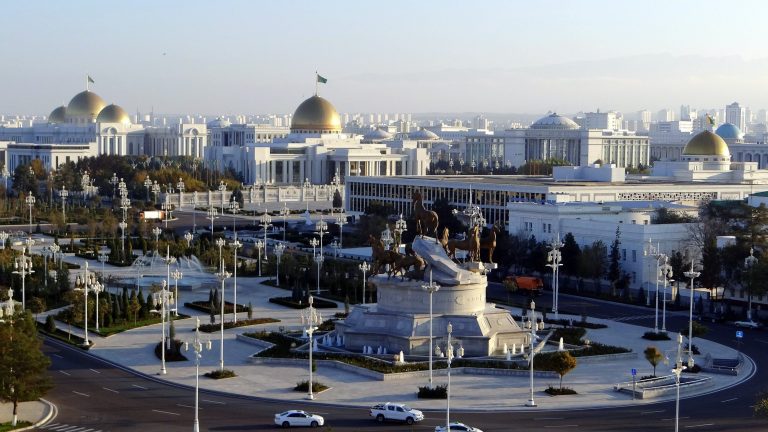This is how the Łukasiewicz – Institute of Electrical Engineering works. “We don’t have and shouldn’t have any complexes”

– The scientific problems undertaken by the Łukasiewicz Research Network, as well as the challenges related to the development of new technologies, are implemented at the highest global level by the best scientific and research units around the world – says in an interview for “Wprost” Dr. Eng. Marcin Parchomiuk. The Deputy Director for Research at the Łukasiewicz Institute of Electrical Engineering also described several specific projects that are currently being worked on.
Magdalena Frindt, “Wprost”: The Łukasiewicz Research Network is one of the largest organizations of this type in Europe. As Poles, we cannot have any complexesthat in the scientific field. Not only are we not behind others, but sometimes we are even ahead of them.
Dr. Eng. Marcin Parchomiuk, deputy director for research at Łukasiewicz – Institute of Electrical Engineering: Currently, the Łukasiewicz Research Network employs 7,000 people, including over 4,500 scientists operating throughout Poland. The establishment of Łukasiewicz is a response to the need to support public administration with specialized expert knowledge, especially in areas related to modern technologies.
The main goal of the activity is to conduct research work that is crucial from the point of view of the country’s policy and market needs, but also to commercialize the results of this work. Scientific problems addressed by the Łukasiewicz Research Network, as well as challenges related to the development of new technologies, are implemented at the highest global level by the best scientific and research units around the world. Additionally, the technologically advanced research equipment we have and new investments in this area confirm that we do not and should not have any complexes.
There are 22 institutes operating within the Łukasiewicz Research Network, including the Łukasiewicz Institute of Electrical Engineering, which was officially established in 1946. How many people make up this unit today?
Currently, our Institute (Łukasiewicz-IEL) employs over 300 people in five locations throughout Poland, in: Warsaw, where the headquarters is located, but also in Gdańsk, Lublin, Wrocław and Międzylesie near Kłodzko. Despite technological changes and market requirements over almost 80 years of the Institute’s activity, we are still present in many sectors of the economy, including: energy, transport, construction and industry.
What areas does the Institute’s work focus on? How can it be characterized?
We operate in the areas of energy processing and storage, electromobility and intelligent transport, energy systems, hydrogen technologies, electrotechnical materials, and power equipment and electrical devices. The arrangement of the Institute’s competences in six Research Centers, as well as our research infrastructure, allow us to undertake strategic research and development work, often requiring the selection of competences and knowledge of various employees.
There are 10 research laboratories in the Research Centers, specializing in their areas of competence, including laboratories and a certification body operating under PCA accreditation. Many of our technologies and products are commercialized with the help of the Experimental and Production Department in Międzylesie near Kłodzko, which has been supporting the development of the electric power industry since 1964.
Your activities include, among others: laboratory services, but also certification. What are your main goals?
One of our priorities is to provide high-quality laboratory and certification services that meet customer requirements through timely provision of services, professional advice, customer service and tailoring the offer to individual needs.
We strive for continuous development, acquiring new customers and markets and expanding our competences. By operating under PCA accreditation, we confirm that our services comply with applicable standards and regulations. We have five accredited research laboratories no. AB074, AB022, AB067, AP102, which enable carrying out appropriate tests, as well as a certification body no. AC168.
What specific activities do you carry out?
We perform tests of high and low voltage DC and AC switchboards, fuses, circuit breakers, transformers, busbars, lighting equipment, light sources, lighting power systems, extension cords, electric toys, variable message road signs, household appliances, power tools, electrical machines, overcurrent and residual current circuit breakers for home applications and many others.
A list of materials is available on the Institute’s websiteaboutin electrical engineering, ktaboutre are the subject of research. The list is long and includes, among others: photovoltaic cells, magnetic materials, powder technologies, electrical insulating compounds, electrical insulating varnishes and enamels, nanotechnologies. And although many of these names may sound somewhat abstract, the activities undertaken in this area are closer to us than it might initially seem.
That’s true. The scope of our work includes not only laboratory research or development of new technologies, but also the design and improvement of already used electrotechnical products. We are currently working on car chargers made in GaN technology, installations used for renewable energy sources, recycling of wind turbine blades and a drive system for cooperation with an on-board charger.
Our work also focuses on the production of green hydrogen, as well as sustainable and ecological railway systems. These are just a few examples of how wide the scope of activities of the Łukasiewicz – Institute of Electrical Engineering is.
However, theorizing is one thing and showing applications in practice is another thing. What projects are you currently working on?
“A modern drive system for commercial vehicles working with an on-board charger called iPower” is a project that includes the design of a modern drive system with an engine with a rated power of approximately 115 kW for commercial vehicles. The project involves the construction of an innovative solution in which the drive inverter is integrated with the engine and at the same time allows for charging the vehicle’s on-board battery.
The power circuits of power electronic devices will be designed based on the latest SiC and GaN semiconductor technologies in order to reduce the size of the device and increase the efficiency of the solution. The project aims to prepare comprehensive technology enabling the offering of this type of drives on the market.
What other activities do you do?
It is worth mentioning the project “Recycling of wind turbine blades – processing method and development prospects”. As part of the research direction “Green, Low-Emission Economy” and the Łukasiewicz Program “Offshore Wind Energy”, the Łukasiewicz Research Network – Institute of Electrical Engineering conducts research on the recycling of wind turbine blades. The actions taken are consistent with the assumptions of sustainable development and circular economy in the field of energy.
The aim of the project is to develop a technology for recycling offshore wind turbine blades in the light of circular waste management from post-operation wind farms. So far, shovels have been disposed of by landfilling, which, no matter how it is used, has a harmful impact on the environment. The implemented project focuses on the method of waste-free recycling of blades and the use of secondary raw materials for the production of replacement products or service materials.
We are also working on the “Green Ammonia Production – Hydrogen” project. It is worth adding that we carry out activities as part of an international consortium with entities from Turkey, Portugal, Hungary, Austria and Poland.
What is the mainaboutWhat is the purpose of this project?
The project is a response to the need to strengthen national security in the field of energy and raw materials of strategic importance for the economy. One of the key directions is the technology of using “green” hydrogen produced by water electrolysis. The project will involve optimization of the operation of the green ammonia production installation.
The project results are critical from the point of view of national energy security, implementation of the Polish hydrogen strategy and achieving energy independence. As a result of the project, a pilot installation for the production of green ammonia using energy from renewable sources will be launched. This will allow us to start decarbonizing the ammonia production process, enabling us to meet CO2 emission reduction requirements.
CoaboutWorking with foreign entities is not only an opportunity to exchange information, but also to mark your presence in the world.
In this context, I would like to mention the project “Sustainable and ecological railway systems” (Rail4EARTH). Participation in Europe’s Rail JU gives you the opportunity to cooperate in an international environment and have direct contact with entities from all over Europe. It also opens up the opportunity to obtain the latest solutions and concepts developed by international entities.
It is also an opportunity for Łukasiewicz to ensure that our solutions can be used throughout the European Union. For Łukasiewicz – IEL, as the leader of one of the substantive areas, this is an additional challenge, primarily coordination. As part of the project, the consortium will work on a model railway station, a standard for refueling hydrogen locomotives in Europe, new construction materials based on waste raw materials and systems to support the railway operator, manage energy hubs and travel planning.
It is clear that the Institute undertakes many activities. Someaboutre cards are already revealed, and probably many others remain a secret. Can we expect that in 2024 you will surprise the scientific and research community with something?
Łukasiewicz-IEL is currently implementing approximately 30 research and development projects, including investment projects, both domestic and foreign. The total budget of the implemented projects is approximately EUR 150 million, including the budget of Łukasiewicz-IEL is EUR 9.3 million. We plan that selected results of the above-mentioned projects will translate into the implementation of innovative solutions into the economy and will allow the launch of new research stations, including: in the field of hydrogen technologies.
From January 1, 2024, we focus even more on internationalization! This year we visited a number of research and scientific institutions and enterprises, including: in Portugal, Germany, Finland, the Netherlands, Taiwan. We plan to employ and cooperate with the best scientists from Poland and abroad to strengthen work on developing breakthrough technologies that can change our everyday lives.
Additionally, we are constantly working to improve the quality of our work as well as the standards of cooperation with domestic and foreign entities in order to gain stable trust of our partners. We are also planning an innovative approach to the implementation of joint research and development projects, which we hope will pleasantly surprise the scientific community, but also business representatives.






